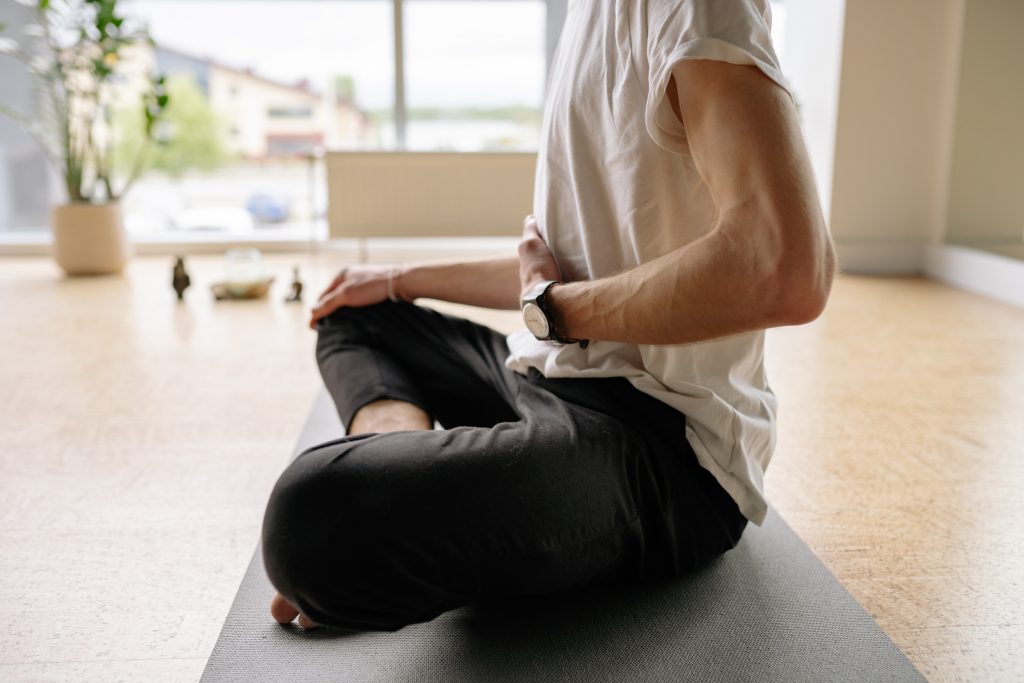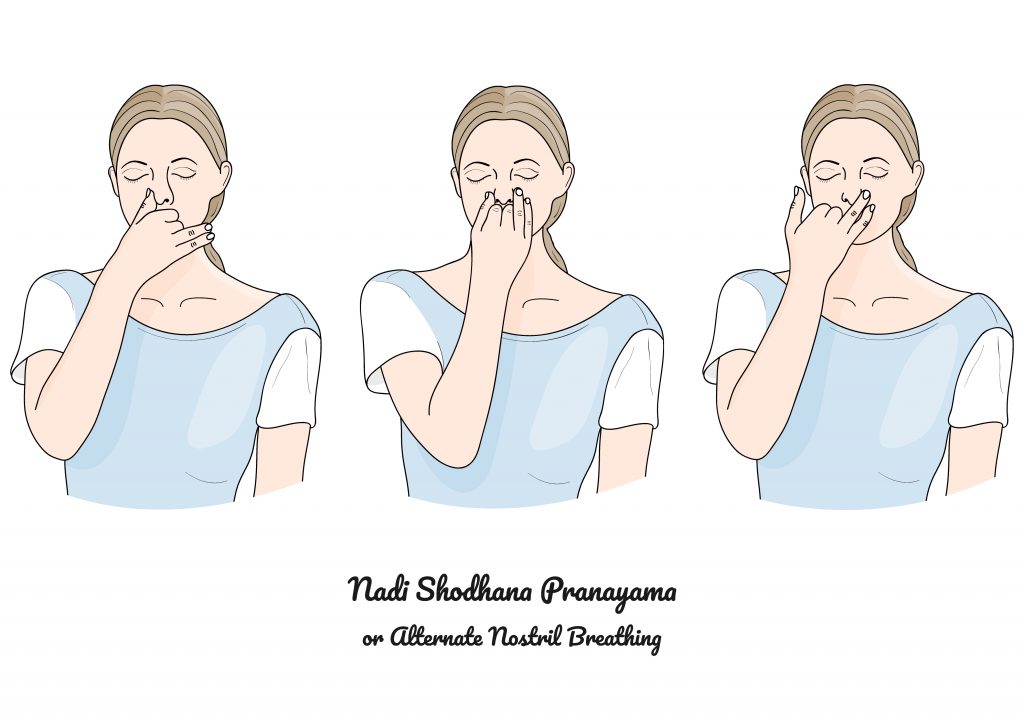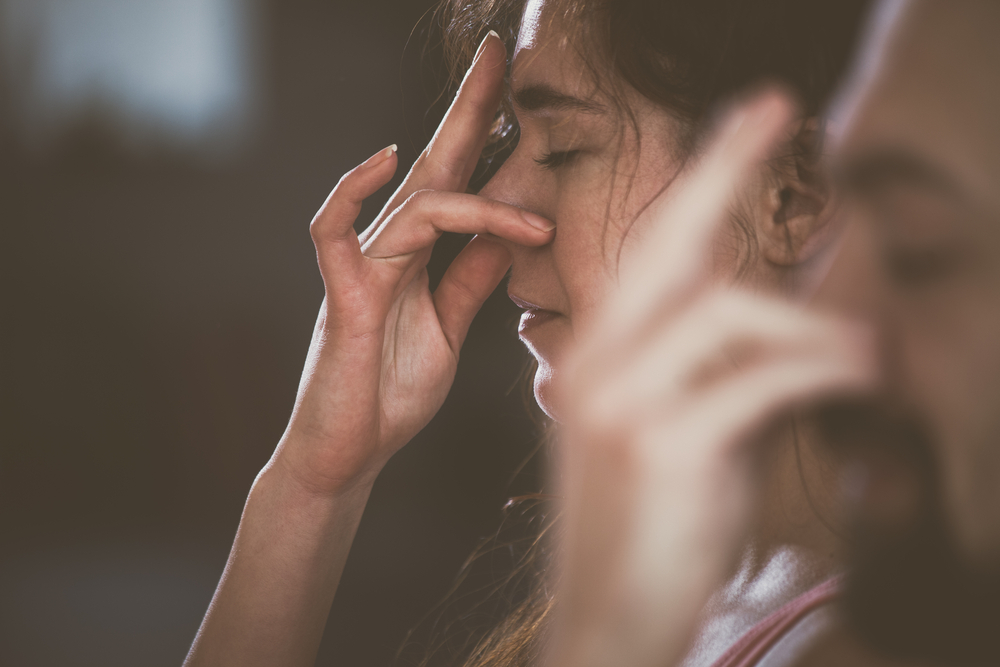Yoga is composed of 8 pillars, among which we find pránáyáma. From “práná” which means breath or strength of life, from “yáma” which speaks about control and discipline, we also have “ayam” which evokes expansion. The practice of the pránáyáma aims at deploying the strength of life by controlling the breath. The regulation of the breath constitutes the 4th pillar of yoga, after mastering the “asanas”, the postures and, just before reaching the 5th relating to the capacity to channel and unify the mind.
Our breath is essential to our survival. Indeed, our physical body can survive weeks without food and days without water. However, it can only survive a few minutes without air.
What is pránáyáma?
Pránáyáma techniques involve conscious manipulation of the breath through specific patterns and rhythms. These practices aim to balance, regulate, and enhance the flow of prana in the body, as well as promote physical, mental, and spiritual well-being.
Pránáyáma is based on 4 phases of our respiratory cycle:
- Puraka – Inspiration: Promoting the capture of air in a smooth and efficient way
- Kumbhaka – Exhalation: The control of the outflow of air
- Rechaka – The retention of full lungs: We keep the air after inhaling
- Súnhyaka – Retention on empty lungs: We stay on empty lungs after exhaling
The objective of pránáyáma is to work and develop our capacity in each phase. Surely, breathing is the only vital function we can act for our will and thus influence our body. Furthermore, it is the control of the body by the mind through the breath.
What are the benefits of pránáyáma?

The benefits of pránáyáma and yoga breathing techniques are the following:
- Emotional and mental balance
- Better digestion
- Better oxygenation of the blood
- Better blood circulation and blood pressure
Emotional and mental balance
Daily stresses shorten our breathing and contract our diaphragm, which blocks breathing in the upper position. That is why, the renewal of the air is not efficient, and we feel oppression which by force favors this sensation of a “full vase” source of irritability and emotional slippage. Moreover, gaining in breathing amplitude will allow relaxing the diaphragm, which rests the vagus nerve, and brings a feeling of space favorable to welcome more lightly the stressful events of our day.
Improve your digestion by practicing pránáyáma
The more optimal the breathing, the more the diaphragm movements massage the digestive organs. This optimal breathing favors a good fluidity of all the tissues surrounding the digestive organs, allowing exchanges and optimal functioning. Furthermore, the practice of pránáyáma will be very beneficial for stomach problems often associated with important somatization at the diaphragm and the solar plexus and for the issues of intestine and transit.
Better oxygenation of the blood
The practice of pránáyáma will improve the lung capacity and thus the efficiency of each breath. A better renewal of oxygen favors good muscular and cerebral functioning.
Improving blood circulation and blood pressure
As we have seen, breathing will help reduce stress, which is an essential factor in increasing blood pressure. By the ample movements of good breathing, we also optimize the quality of blood circulation. The inhalation and exhalation create a depression effect in the thoracic cage, which favors the venous return and, thus, a better renewal of the blood in the whole body.
Which Yoga breathing techniques to start the practice?
1) Pránáyáma techniques: Energizing breathing "Bhastrikâ"
This yoga breathing technique imitates the bellows, and like the bellows, bastrika stirs up the inner energy fire. Moreover, Bastrika allows hyperventilation. So, be careful at the beginning. With practice, it improves cellular breathing, revitalizing the body. Moreover, it is a purifying and strengthening technique.
Example: Sitting cross-legged, with a straight chest, we focus our attention on our belly. It is our belly that leads the movement. We inhale by inflating the belly quickly, and we exhale by contracting the belly quickly. Inspiration and expiration are very brief. We link 20 cycles of inspiration and rapid expiration. Then, we make a deep inspiration. We remain full lungs for a few seconds. It forms a cycle, and you can do up to five cycles.

2) Relaxing breathing
This abdominal yoga breathing technique amplifies our breathing by mobilizing the diaphragm more by moving the belly. We settle our breathing in the lower abdomen rather than the rib cage. Indeed, putting our attention on our breathing already allows us to calm the mind and center ourselves. Moreover, this pránáyáma method allows you to fight against stress and incorporate it into your daily life. Therefore, don’t hesitate to use this method as a preventive measure when you face important stress.
Example: Sit on the floor, put your hands on your belly, inhale for 2 seconds and feel the belly’s movement under your fingers. Then exhale for 4 seconds by pulling in the belly, repeat 10 times to form a cycle.
3)Balancing breathing
Nadi Shodhana is a breathing exercise that allows us to rebalance our hot and cold sides, harmonize our body’s action and recovery modes. Indeed, this technique purifies the channels that enable energy to flow through our body.
Example: In a comfortable sitting position, the spine is straight, aligned with the pelvis and the neck (you can sit on a cushion). We form a pinch with the thumb, the index, and the middle finger. One inhales deeply with the two nostrils, then one stops the right nostril with the thumb, expires by the left nostril, then inhales by the left nostril. Next, we block the left nostril with the index and the middle finger to expire and inhale by the right nostril. That forms a cycle of breathing. It continues by stopping the right nostril, breathing out by the left nostril, etc. You can practice about ten cycles before taking a full breath with both nostrils.

Bottom line
Like any practice with beneficial effects, regularity will give you the best effects. Start once a week, then gradually increase the frequency of your practice. Finally, the benefit is already taking a moment to be fully present and aware of your breathing.
Sources:
- La bible du yoga, BKS IYENGAR
- Pranayama techniques
- Yoga center Nanterre
- Namaste yoga
- La respiration ventrale : la clef de la détente
- Benefits and Power of Pranayama – Kaivalyadhama


